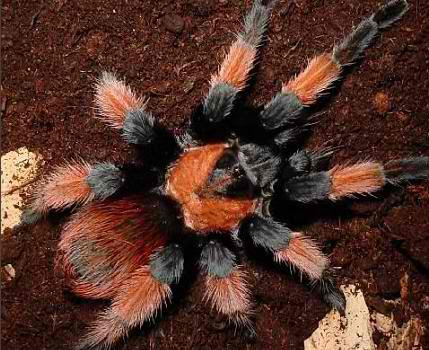

Although they are called bird-eating spiders, there is very little evidence to suggest they actually catch and eat birds.ĭue to their exoskeleton and method of growth, salmon pinks, like many invertebrates, regularly moult out of their old skin ( ecdysis). In the wild, a salmon pink will feed mainly on large insects and, occasionally, amphibians and small reptiles. They are ambush predators, lying in wait, striking prey as it comes close, and quickly injecting venom to subdue it. In the wild, the tarantulas inhabit the forest floor, where they stay in hiding places such as leaf litter, inside logs, or in burrows, or out in the open.

These hairs are extremely irritating in the hobby, they are considered to be one of the more painful hair types.
#Tarantula leg erebus wiki Patch
However, rather than biting, they choose to flick urticating hairs from a patch on their abdomen these hairs are covered in barbs which irritate the skin and put off potential predators. Some sites claim that a bite from a salmon pink is similar to that of a cat. parahybana are mechanically dangerous but not medically significance since fangs, which can be up to an inch long, are capable of penetrating human skin but the venom is weak to humans. They are known to bite only when provoked, and even then, this is a last resort. The Brazilian salmon pink tarantula is capable of delivering a painful bite. If the attacker continues to attack, the tarantula will bite. When threatened, the tarantula will raise its legs in the air, as well as the front of its body, in order to deter predators. parahybana are endemic to Brazil in the Atlantic forest region of the country they are known from one area near Campina Grande. They are widely considered by pet traders to be an aesthetically pleasing tarantula species they are a uniform black colour, and once mature, have pink-red hairs along the legs, chelicerae and abdomen, with colours tending to be more vibrant in males. Mature males will also have tibial hooks on the front pair of legs these hook back a female’s fangs during mating. Females are often bulky: they have a large body size in comparison to their legs, whereas males tend to be slender in body size. However, females can weigh more than 100 grams. The salmon pink bird-eater can attain a leg size of up to 11 inches especially in males as their legs are longer than the female’s. According to local legend, the appearance of Locusts is the #1 cause of wet leggings in the entire Erebus.A male Lasiodora Parahybana kept in captivity Description.Whilst they only deal two hearts of damage, they tend to attack twice per second, giving them an astounding DPS of four hearts. They are capable of chasing down fleeing players, depending on the terrain. Mean, green and certainly obscene, they prove to be a challenge for even experienced Erebus adventurers or those coming in from other mods' "lategame", with high-tier equipment. Locusts are the big daddy of Grasshoppers. They don't hop that high, they're lazy.Nothing a bunch of lava couldn't solve, luckily. "accidents." whilst bugtesting on chylex's server.
During 0.1 development, when the breeding wasn't capped, there were some.Grasshoppers are supposedly quite rare, although on several accounts they have proven plentiful. After a Grasshopper has bred a certain number of times, they will turn into a Locust miniboss. During this period of eating, they breed, spawning new Grasshoppers. Grasshoppers search for food (in the form of crops and tall grass) to devour, which they do by breaking the block. The Grasshopper is a magnificent mob found in Elysian Fields and Subterranean Savannahs.


 0 kommentar(er)
0 kommentar(er)
